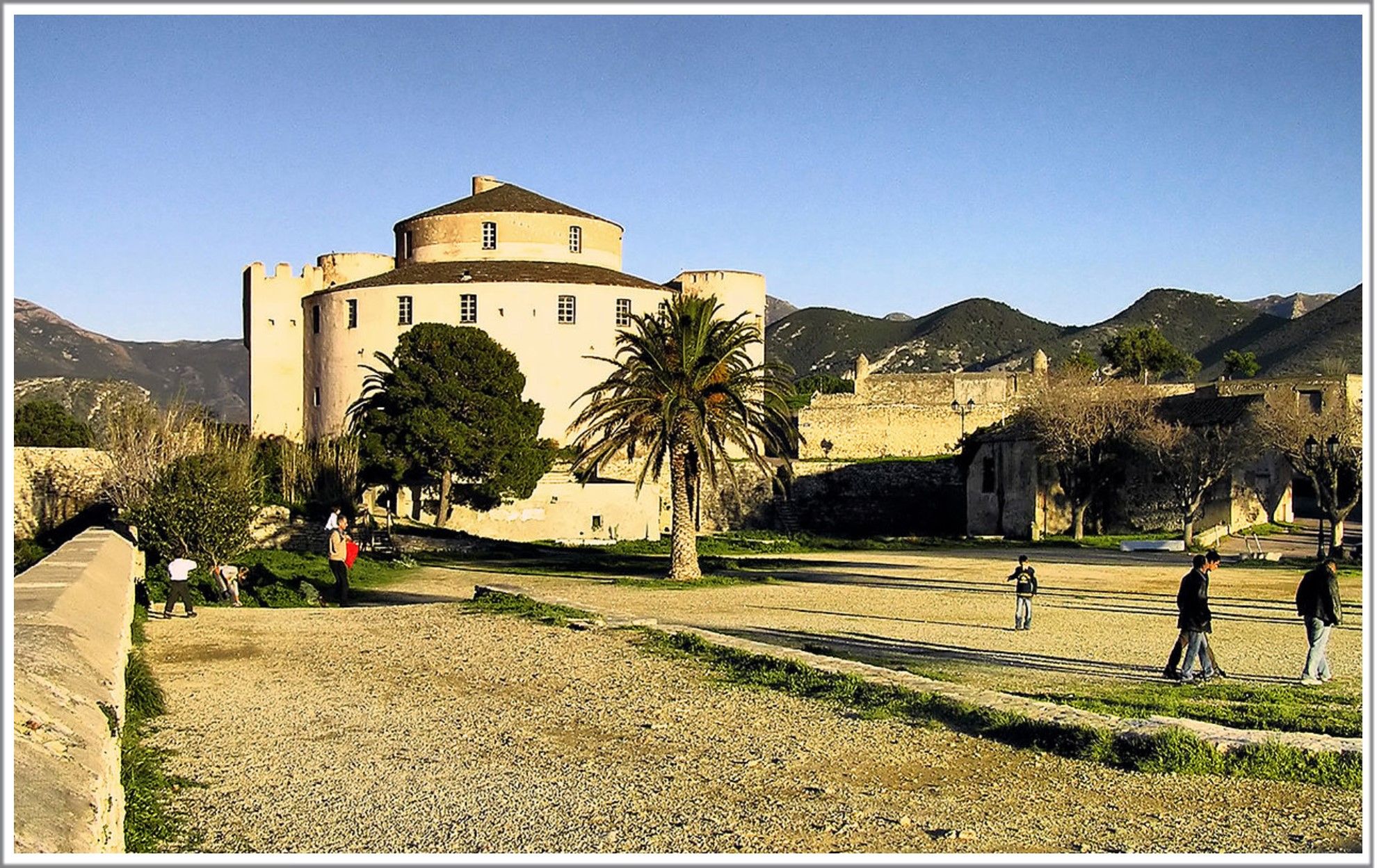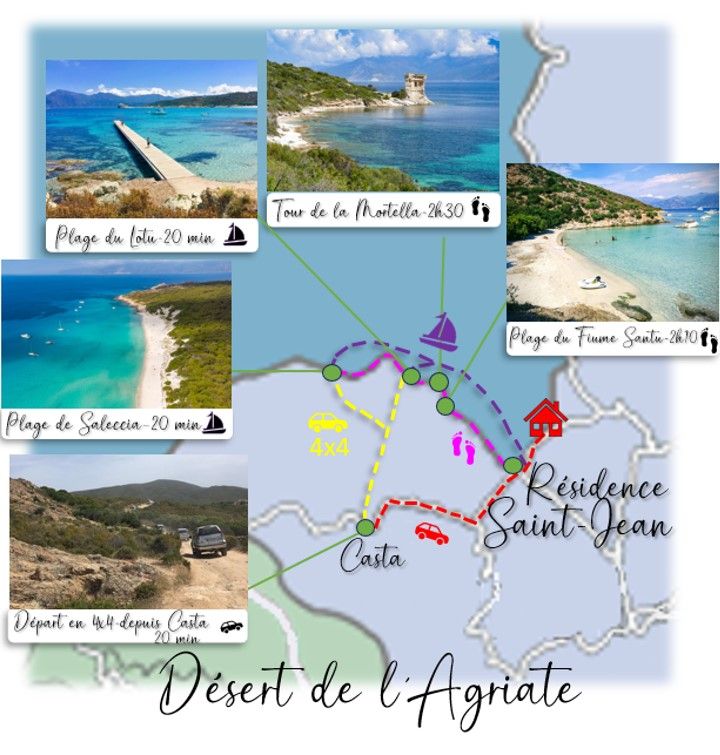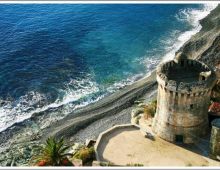The essentials
Without commercial interest, I would like to offer you on this page my personal selection to enrich your stay with unforgettable memories.
Happy to welcome you to our establishment, I remain at your entire disposal for any additional information to this little guide and useful to your stay.
The entire Résidence Saint-Jean team wishes you a pleasant stay.
Discovery of Saint Florent
The major attraction of the port of Saint-Florent is undoubtedly its location in the heart of the village, allowing you to stroll along the quays, taste our specialties facing the setting sun or even do some fishing. shopping. Mooring berths all year round will be reserved for you there upon simple request to the Harbor Master’s Office. The port, considered one of the most beautiful in the Mediterranean, also welcomes a large number of cruise ships.

An anchor point for sailors, very early in the morning you can take advantage of the calm and the still low temperatures in the port to welcome the few fishermen still active, who return to the port. You will be able to admire the “pointus”, traditional fishing boats and other trawls alongside the larger units in perfect harmony.
Along the colorful and picturesque quays you will enjoy strolling and in the evening, facing the setting sun, sipping a drink or dining on the terraces of the numerous restaurants, you will enjoy the ambient entertainment enhanced by a small night market.

The “Saint-Tropez Corsica” exists! Come to Saint Florent, you will judge for yourself.
Port town at the foot of Cap Corse, Saint-Florent has experienced many inconveniences. The city, founded by the Genoese in the 16th century, was ravaged by malaria then disputed by the French, the Genoese and the Corsicans.
Iconic figure of the island, Pascal Paoli who fought for the independence of Corsica, reconquered the port in 1793, helped by Nelson's fleet. Today, a magnificent little marina awaits you, in an old town full of memories.
Its citadel, built in 1440 by the Genoese, which was until the 17th century the seat of the bishopric of Nebbio and the governor's residence. Between terrace and old houses, don't forget to pass by Place des Portes, the nerve center of the city.
Here, pétanque players meet, displaying a familiar air of southern towns.
Saint-Florent is also surrounded by magnificent beaches, most of them wild, accessible by 4 hours of walking or by boat.
The best known are those of Lotu and Saleccia.

Where to eat in Nebbio
| À Saint-Florent : | ||
| Nom du restaurant | Spécialité | Ticket Moyen |
| La tablée de Mamo | Cuisine variée | €€ |
| Le Grill Steakhouse | Viande & Légumes frais | €€ |
| L’arrière-cour | Spécialités Corses | €€ |
| A Cantina | Spécialités Corses | €€ |
| L’auberge de l’Europe | Cuisine variée | €€ |
| La Gaffe | Poissons - Fruits de mer | €€€ |
| L’Auberge du pêcheur | Poissons | €€€ |
| La Marinuccia | Poisson | €€€ |
| Le Mathys | Cuisine Méditerranéenne | €€€ |
| A Poppa | Cuisine Méditerranéenne | €€€ |
| À Patrimonio : | ||
| Nom du restaurant | Spécialité | Ticket Moyen |
| Le Bartavin | Spécialités corses – pizzas | €€ |
| U Scuntru | Spécialités corses | € |
| Inde noi | Viandes grillées – spécialités corses | €€ |
The Agriate desert
A day in Paradise
The Agriate territory extends over 15,000 hectares. This vast area is well delimited geographically: to the north, 37 km of natural shores without any urbanization, to the south, departmental road no. 81 and the foothills of Tenda, to the west, the Ostriconi valley, to the east, the town of Saint Florent and the Nebbiu plain.
Access by boat
A preserved gem accessible in just 20 minutes thanks to the water taxi from the Saint-Florent port. An unforgettable day in store, embark and think about this hidden treasure which is revealed to the rhythm of the animated waves.
By the track
It is also possible to cross the Agriate desert by 4X4 shuttle from the village of Casta. To get to Lotu beach or Saleccia beach (travel time: 1 hour).
Walk
For the more sporty among you, the coastal path starts from Saint Florent beach or the Fornali car park.
Allow about 3 hours of walking to reach Lotu beach. On the way you will have the opportunity to refresh yourself in the Fiume Santu cove, then observe the Mortella tower.
| Pour se restaurer | ||
| Nom du restaurant | Spécialité | Ticket Moyen |
| A Piniccia | Plage de SALECCIA | €€ |
| La Cabane du Lotu | Plage du LOTU | €€ |
The Nebbiu region
Land of vineyards, olive groves, orchards and pastures, crisscrossed with dry stone walls and dotted with sheepfolds, Nebbiu has always been prosperous, deserving its nickname of “Golden Conch” (A Conca D 'oru in Corsican language).
Today, wealth also comes from tourism, notably from the seaside attraction of Saint-Florent. The region has many small, welcoming villages set up as observatories on the heights surrounding the Aliso basin.
The church of Patrimonio
The walls of the building have the particularity of not having been covered with coating.
The church therefore appears entirely of ocher stone, with clearly visible holes which were used to install the scaffolding during its construction in the 17th century.
It bears the name of Saint-Martin (San Martinu), patron saint of the village. On 11/11, Saint Martin's Day, a religious ceremony was held in the church in his honor, bringing together multiple brotherhoods; it is followed by the blessing of the new wine and a village festival.
Take the opportunity to taste some wines from the 33 estates in the village!

The Nebbiu Cathedral
Also known as the church "Santa Maria Assunta", it is located on the edge of St Florent, along the small road which runs between the Société Générale and the Maison des Pizza.
It is a magnificent medieval building whose construction date is uncertain (12th century between 1125 and 1140).
It still sometimes serves as a place of worship or for musical performances in the summer season.
Just before, on the left of the road, a row of abandoned columns questions the visitor: these are the remains of an old vine belonging to the monks.

The Church of Murato & its village
At an altitude of 475 meters, the church of San-Michele de Murato dominates the Gulf of Saint-Florent. Renowned for being one of the most beautiful churches in Corsica, it features a unique and colorful architectural style, dating back several centuries.
Isolated one kilometer from Murato, its polychrome facades in green serpentine and pale limestone are the testimony of Pisan island art from the 12th century.
On its walls, numerous motifs tell us about the customs of the time: animals, sheaves of wheat but also severed hands (for thieves) and cut tongues (for liars). Furthermore, two characters are present, they represent (according to tradition) the lords who financed the construction of the church. But they could also symbolize judicial and religious powers (they wear robes and a book of laws).

Pieve
Pieve is a street village sheltering around a hundred souls in winter, four times more in summer.
The facades are ordinary and the treasures well hidden. Who knows, in fact, that on the church square stand imposing stantari (menhir statues), witnesses of prehistoric life?
And that an hour's walk away are some astonishing remains? Ask the villagers for directions, they will show you the start of the ravine track which leads to “A Chjesa nera”. Of this “black church” built in the 12th century by the Pisa regime, there remain magnificent serpentine ruins, sleeping in the middle of a plateau culminating at an altitude of 600 meters. Between sea and mountains, on an ocean of maquis, the fabulous 360-degree panorama does not reveal the slightest trace of modernity. This is exactly what the French troops who came to camp there in 1769 discovered, on the eve of the Battle of Ponte-Novo.
Sorio
A few kilometers further, after a tunnel of chestnut trees, the village of Sorio rises up the hillside.
“You can’t miss our village,” exclaims the mayor, “it’s the only one where an olive tree has managed to grow at the top of the bell tower!” You will have understood, the olive is the passion of the villagers. But beware! not just any one. Here, we worship the “Biancaghja”.
This local variety specific to the Nebbiu region was recognized in the controlled designation of origin granted last year to Corsican olive oil.
Ancient terraced gardens buried under the maquis were cleared a few years ago and the centuries-old olive trees once again make up, over dozens of hectares, magnificent silvery waves.

Santo Pietro di Tenda
< /span>It is in this village that you must discover the famous giant dressed in ocher stone.
Overlooking the road, Saint-Jean-l'Evangéliste is a superb church with the dimensions of a cathedral.
With its 38 meters in length and 17 meters in width, its immense choir and its barrel vault, it is one of the three largest in Corsica.

Le Cap Corse
Santo Pietro di Tenda
< /span>It is in this village that you must discover the famous giant dressed in ocher stone.
Overlooking the road, Saint-Jean-l'Evangéliste is a superb church with the dimensions of a cathedral.
With its 38 meters in length and 17 meters in width, its immense choir and its barrel vault, it is one of the three largest in Corsica.
Cap Corse is made up of two dissimilar slopes. It does not have the same appearance in the West and in the East. The western coast, very indented, is dominated by the high dorsal range whose slopes plunge brutally into the sea.
It offers impressive sites and boldly perched villages. the eastern coast is lower, more straight, regularized by the alluvium torn from the mountain by the torrents.
During your visit to Cap Corse, you will be able to see many “Genoese Towers”.
Built at the instigation of the tutelary power, Genoa, the towers essentially provided an observation and alert function for the population to allow them to take refuge in safe areas of the hinterland. To protect themselves, the Cap-Corsins erected 32 round watchtowers on the coast, many of which still remain. The notables had square towers built which could serve as a refuge for the population of neighboring hamlets.
The Cap-Corsins were at the origin of the first French trading posts created in the 19th century in North Africa and a large number of them emigrated from the middle of the 18th century to the United States and South America and the West Indies.
Cap-Corsine emigration to South America until the beginning of the 20th century influenced the architecture of the region.
Immigrants who made their fortune, particularly in Puerto Rico and Venezuela, built sumptuous residences in their village of origin with the look of “Italian Renaissance Palazzi” or “South American” colonial style.
Places to visit
An essential region of the island, Cap Corse can be visited in a certain way.
We always recommend to our clients to start in the eastern part, beginning the visit with the town of Bastia in order to benefit from maximum light and finish with a sunset on the western slope.
- Teghime Pass
- Erbalunga
- Sisco
- Macinnaggio
- Rogliano - The Mattei mill
- Barcaggio
- Seneca’s Tower
- Centuri
- Pino - The St-François convent
- Canary
- Nonza
Where to eat in Cap-Corse
| Nom du restaurant | Localisation | Spécialité | Ticket Moyen |
| Le pirate | Erbalunga | Poisson Fruit de mer Pizza | €€€€ |
| Le Vieux Moulin | Centuri | Poisson Fruit de mer Langouste | €€€€ |
| L’auberge du chat qui pêche | Abro | Cuisine au feu de bois | €€ |
| Chez Morganti | Marine d’Albo | Produits du terroir Bouillabaisse royale | €€€ |
| Da Noi | Nonza | Produits locaux | €€ |
| La Sassa | Nonza | Produits locaux - Cuisine Méditéranéenne | €€€ |
| Bocca Fine | Nonza | Produits locaux - Cuisine Méditéranéenne | €€€ |
La Balagne
What makes the Balagne region famous are the charming villages spread out on the hills between the mountains and the sea.
There are a very large number of pretty little fortress villages with great views and a long history.
The buildings are full of alleys, stone houses and construction using rocks as part of the walls!
L’Ostriconi beach
Accessible only on foot via a path from the old main road, it will offer you a breathtaking panorama in return. Unfolding 800m of fine sand and white dunes, it is a paradise for vacationers and residents of central Corsica.
Located at the mouth of the river of the same name, it is in the heart of a landscape that has remained wild, far from any urbanization. Even the cows like to relax there…

Belgodere
Discover Belgodère, proudly erected on its rocky spur overlooking the Regieu valley.
Walk in the footsteps of the Marquis de Massa, a powerful feudal lord, who one day in 1268 took refuge at the top of the teghje (rocks) before deciding to settle there.
Explore the fortified part of the village of Belgodere, you won't regret it! Pass under one of the three arched entrances and visit the Cima du Fondu and Cabanne districts. Climb to the top of the teghje on the remains of the tower and enjoy the exceptional view available to you.
Take the time to take a break in the village center, to sit at a café terrace before heading towards the parish church, a listed historic monument. Don't forget to look up at the exit of the village if you go towards Costa to see the Malaspina castle.
Ile Rousse and the island of Pietra
Take the time to live on the Place Paoli, under the eyes of “Babbù” Pascal Paoli. You will enjoy the café terraces or an impromptu game of pétanque with friends and enthusiasts in the shade of the century-old plane trees.
Enjoy the stroll along the A Marinella promenade which runs along one of the three magnificent fine sand beaches, Napoléon beach. It will take you to the ocher porphyry island, Pietra. At its summit the coastline of Balagne unfolds, from Calvi to the tip of Agriate, and the villages which make up the history of L'Ile-Rousse. The perfect place to admire the sunsets and immortalize them forever.


San’t Antonino
Eagle's nest clinging to a granite peak at almost 500 m altitude, Sant'Antonino is one of the oldest villages in Corsica and one of the highest in Balagne. Alleys, covered passages and houses blend into the rock. From the remains of the old castello, the view over the plain and the sea is splendid.
Calvi
The most remarkable thing is, without a doubt, the spectacle offered by its majestic Genoese citadel. Like a jewel placed on the water, it looks in the distance at the snow-covered massifs of Monte Grossu which reflect their shadow on the sea. Then, if you stroll through the narrow streets of the city, delicatessens, Corsican designer boutiques, beauty , wellness and restaurant terraces await you under the protection of Sainte Marie. They promise you atypical as well as unforgettable encounters!
At the foot of the imposing Genoese building, the boats of fishermen and pleasure boaters moor to the colorful navy. A few steps away but still in the city center, is its long beach of fine, immaculate white sand. It is fringed by a pine forest that you can walk along via the wooden footbridge that borders it. After your swim and your sun treatment, this green oasis promises you rejuvenating corners of shade.

Where to eat in Balagne
| Nom du restaurant | Spécialité | Ticket Moyen |
| La ferme auberge de Pietra Monetta | Ostriconi | €€ |
| Licciola | Palasca | €€ |
| A Siesta | Promenade de la Marinella Ile- Rousse | €€€ |
| I Scalini | San’t Antonino | €€€ |
| Le Matahari | Plage de l’Arinella Lumio | €€€€ |
| A Piazetta | Place Marchal Calvi | €€€ |
| U Nichjarettu | Route de Porto par la côte Baie de Nichiareto | €€€ |
The Cortenais region
Corte, at the crossroads of the Restonica and Tavignano valleys. From the top of its promontory, like a true sentinel, the Corte citadel watches over the city. At the crossroads of the Restonica and Tavignano valleys,
surrounded by the highest peaks of Corsica; Monte Rotondo and Monte Cinto, Corte is the geographical heart of the island.
The citadel of Corte, museum of Corsica
The brand new regional anthropology museum of Corsica exhibits in the Corte citadel the face of traditional society, economy and culture. But it is first of all a space resolutely open to modernity where the presentation of agropastoral heritage allows us to better understand the reality of the island in all of its history.
A paradise for walkers to whom it offers various hiking opportunities, the City also symbolizes the highlights of island history. Former capital of Corsica, Corte is today its university and cultural center.
The old town, overlooked by the citadel built in the 16th century, has retained all the charm of a mountain village.
You can visit the only vestige of Genoese civil architecture, the Palazzu Nationale, where the government of Pascal Paoli seated from 1755 to 1768. An essential element of the cultural capital of the island, the anthropology museum of Corsica, has found a place of choice in the heart of the citadel, in old rehabilitated barracks.The Douzan gallery, evoking agropastoral traditions, habits and customs, as well as a gallery devoted to the social, cultural and economic aspects of contemporary Corsica, are complemented by a sound library and an icon library.
About half an hour from Corte, near Ponte Leccia, the village of Morosaglia is home to the Pascal Paoli museum, which was set up in the native village of the “Father of the Corsican Fatherland”, who fought fiercely for the independence of Corsica. It presents various objects, souvenirs and documents that belonged to Pascal Paoli.

Between Corte and Niolo, the Scala di Santa Regina, a 10-kilometer indentation in the rock, is as dazzling as a work of art. On site, you will not be disappointed by the show.
For nature lovers and mountain dwellers, the Tavignano valley winds through the maquis and chestnut groves, the valley is a pleasant place for walks. It leads, for the most persistent, to A Bocca di l’Arinella at 1592 meters above sea level. The walker will discover ancient terraced vineyards.The Restonica gorges, a classified gorge since 1966, which we ascend from Corte, opens between two mid-altitude peaks, A Punta di u Corbu 802 meters above sea level and A Punta di Zumulu 934 meters above sea level. The carriage road allows you to reach the Grotelle sheepfolds, from where a path leads to the Melo and Capitellu lakes, at 1711 and 1968 meters above sea level respectively.




Where to eat in Cortenais
| Nom du restaurant | Spécialité | Ticket Moyen |
| La Trattoria | 6 Court Paoli CORTE | €€ |
| Rivières des vins | 5 Rampe Sainte-Croix | €€€ |
| U Campanile | Place Gaffory | €€ |
| U Museu | Rampe Ribanelle Vieille Ville | €€€ |
| U san Teofalu | 3 Place Paoli | €€€ |
| A Piazzetta | 1 Place Paoli | €€€ |
| L’amoroso | 13 Cours Paoli | €€€ |
The old town of Bastia
Just 30 minutes by car from the Saint Jean residence, discover the old town of Bastia, its citadel and its shops. Take advantage of a day to admire its old port, stroll through the market square, and Place Saint Nicolas. All passing through the Teghime pass which offers a breathtaking 360° view of Bastia and Saint Florent.
The old Port
Visiting Bastia during a stroll through its Old Port offers a charming break into the past. This port is as traditional as it is sublime.
The colorful and ocher facades, sometimes faded by time, face the fishing and pleasure boats. Under the eye of the Saint-Jean-Baptiste church, majestic and guardian of monumental works, life is in full swing.
Cafe owners, fishermen and walkers liven up the Old Port from morning to evening. Nestled in this intimate cove, you enjoy the typical activities of the port city, resplendent sunsets, breakfasts bathed in the smell of iodine, evenings stretching throughout the warm and cozy nights.


Saint Nicolas Square
Located on the edge of Bastia, Place Saint Nicolas is one of the most visited. Impressive in its size, surrounded by palm trees and bourgeois buildings, framed by a statue of Napoleon and that of a woman holding her son, lulled by the sound of the music kiosk, lined with restaurants and lively shops, Place Saint Nicolas is a nerve center of the city.
If you decide to visit Bastia and pass by this major square, don't miss out on going there on Sunday morning during the flea market.
The Citadel
Bastia was built in 1378. The Citadel, also called Terra-Nova, was built two years later. Today, if you want to visit Bastia, this monument capturing eternity is unmissable. After the flight of cobbled stairs or crossing the Romieu gardens, pass through the Louis XVI gate and let yourself be carried away by the charm of the Citadel of Bastia.
Discover the picturesque streets, this marvelous labyrinth: the colorful facades follow one another, the laundry flutters in the wind on the balconies, the shutters jealously guard the freshness of the houses, the conversations go briskly on the stone benches.< /p>
This authentic haven is full of spectacular historical treasures: the Place du Donjon, the Palais des Gouverneurs and the Bastia history museum, the Sainte-Marie Cathedral.


The Romieu garden
Are you a nature lover and looking for what to do in Bastia? This is a good thing, the Romieu garden invites you to take a charming stroll in the heart of a green setting.
Harmonious, with voluptuous and elegant curves, punctuated with vases on feet, statues, pearling fountains, wrought iron banisters, the Romieu garden is a haven as refined as it is bucolic. The terraced stairs descend to the Old Port and offer a splendid panoramic view of the comings and goings of the ships.















